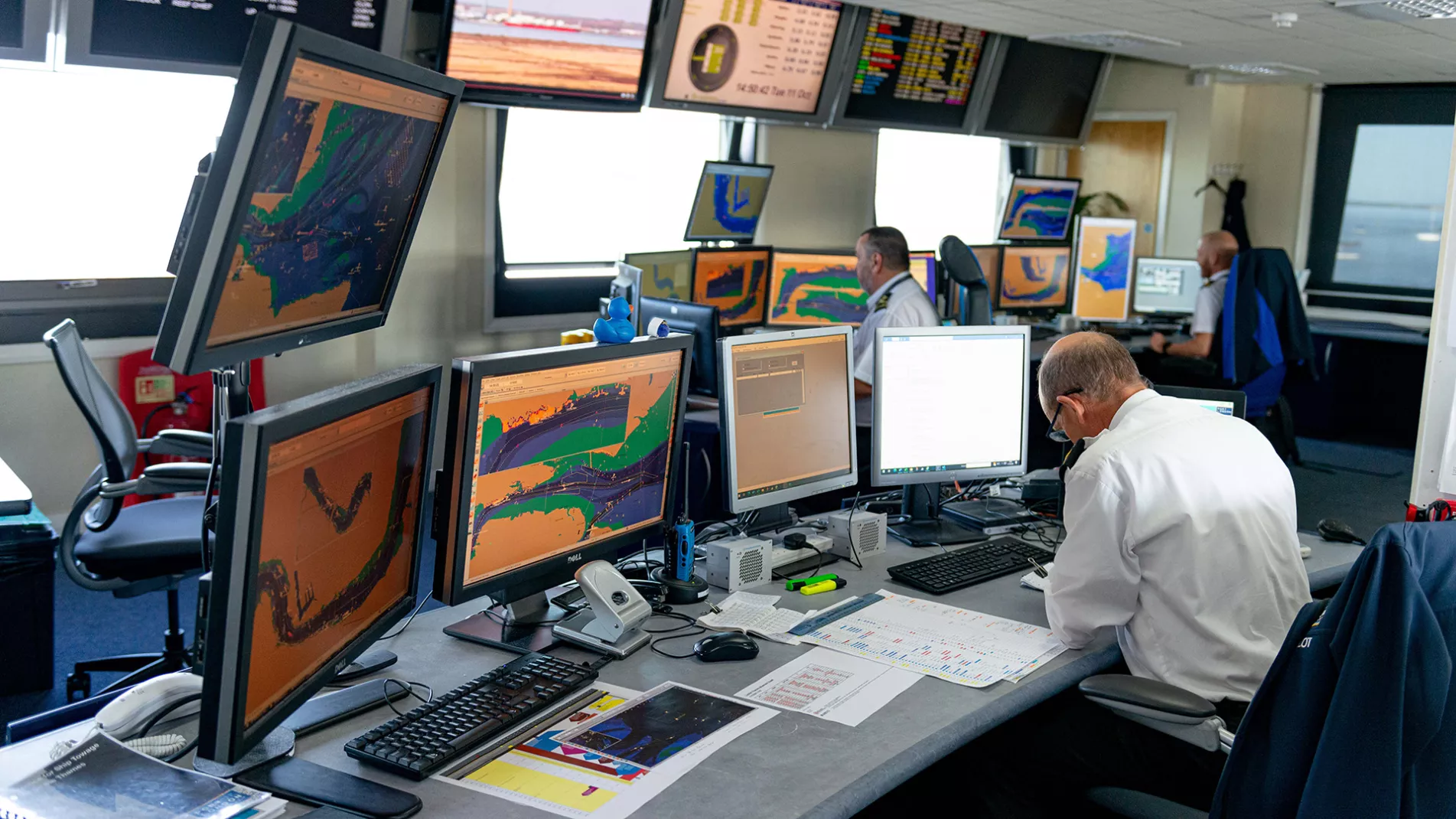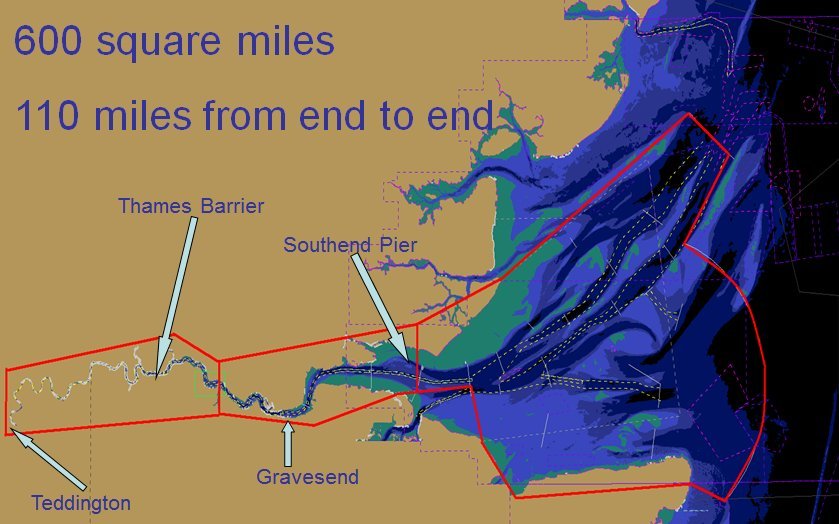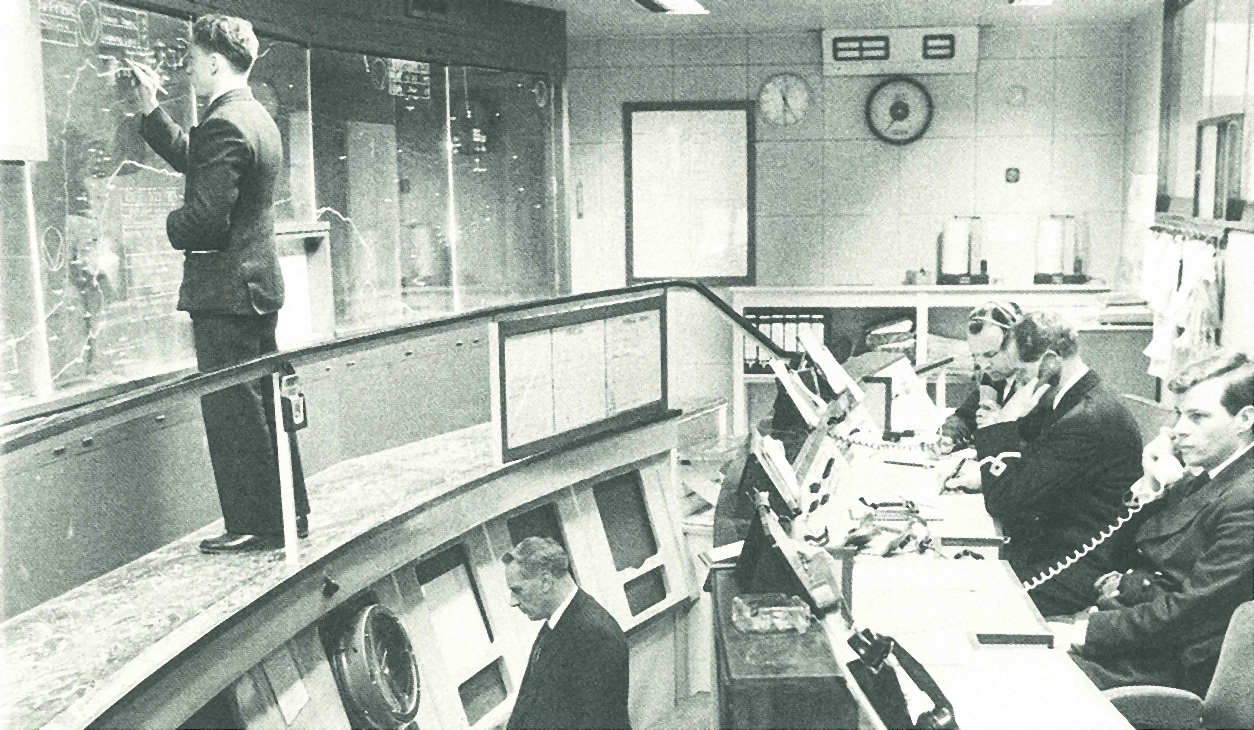Live Tides
NOTICES TO MARINERS
Charts & Surveys

Incident reporting
Life-threatening emergencies on the river:
Call 999 and ask for the Coastguard
For near miss, safety observations and incident reporting click below

Vessel Traffic Services
Our VTS team manages the safe navigation of all vessels on the tidal Thames
On this page
London VTS
One of the largest and most diverse VTS areas in the UK
Contacting London VTS
Operational enquiries should be referred to the relevant VTS Centre:
Phone our 24-hour VTS duty officer:
- For matters between Teddington to Crayfordness: +44 (0)203 260 7711
- For matters east of Crayfordness to the Outer Limits: +44 (0)147 456 2215
Radio London VTS over VHF:
- Channel 14 Teddington - Crayfordness
- Channel 68 Crayfordness - Sea Reach 4
- Channel 69 Sea Reach 4 - Seaward Limit

London VTS covers an area of some 600 square miles of waterway spanning 95 miles from Teddington to the North Sea.
The London VTS team ensures safety of life at sea, safe and efficient navigation, and protects the marine environment, adjacent shore areas, work sites and offshore installations from the possible adverse effects of maritime traffic.
London VTS operates from a state of the art, revolutionary, operations centre in Gravesend.
A team of dedicated VTS personnel oversee the Port of London on a 24/7 basis 365 days a year.
Each VTS Centre is led by a VTS Supervisor with the delegated powers of the Harbour Master and is supported by a team of VTS Officers. VTS is supported by the Head of Port Coordination as well as Pilotage and Shipping Coordinators.
All VTS personnel are fully trained to the International Association of Lighthouse Authorities (IALA) and Maritime and Coastguard Agency (MCA) standards.
Vessel Notification Requirements
We require accurate information about your vessel in advance of its movement on the River Thames for several reasons:
- To avoid unnecessary delays to your vessel
- To provide an efficient service to your vessel
- To meet statutory requirements
Much of the information we ask you for is required under UK law related to the safe management of vessel traffic. If you do not provide us with this information we will not be able to accept the notification for your vessel.
The Merchant Shipping (Vessel Traffic Monitoring and Reporting Requirements) Regulations 2014 and the Dangerous Goods in Harbour Areas Regulations 2016 require detailed information about your vessel's planned voyage. There are also obligations under the EU Directive 2010/65/EU with reference to reportable information.
In the case of a vessel requiring a Pilot we will not be able to provide your vessel with a Pilot until all the information required by the PLA and by UK law is provided.
In the case of a vessel not requiring a Pilot your vessel may be refused entry into the Port of London until all the information required by the PLA and by UK law is provided.
If you do not provide the information marked as mandatory we will not be able to accept your notification and your entry may be rejected and returned to you for correction. Additionally, your vessel may be refused access to the Port of London until the relevant information required by law has been provided.
All voyage notifications must be submitted online via the PISCES system.
If you need a PISCES account please contact the PLA: [email protected]
In order to meet EU obligations for ‘reportable information’ where applicable the waste, hazardous (inward and outward bound) and security fields of the latest version of the MCA CERS 'Workbook' must be completed and attached to the PISCES submission.
- The latest version of the MCA Workbook can be downloaded from the www.gov.uk website.
- For questions regarding completion of the ‘Workbook’ please email [email protected].
Thames AIS
Thames AIS was introduced in 2007 as a key navigational safety tool to improve the situational awareness of vessels navigating on the River Thames and to provide additional safety critical information to London VTS.
The system was revised in 2023 after a consultation resulted in a new approach and subsequent revision of the Thames AIS Technical Requirements Specification which serves as an appendix to Thames Byelaw 12 – Thames AIS Carriage Requirements.
The main aim of Thames AIS is to provide the crew of vessels navigating on the River Thames with enhanced situational awareness of the presence and intentions of other vessels navigating in the area. This is of particular benefit in the more constrained areas of central London where visibility is often obscured by bridges and other obstructions. Elsewhere on the river, Thames AIS ensures that the majority of commercial craft are visible to each other through the presence of an AIS signal thereby increasing navigational safety.
Carriage of Thames AIS
The carriage of Thames AIS is mandatory for certain categories of vessel under PLA Byelaw 12, in summary:
The following categories of vessel must carry Thames AIS if they intend to navigate between Denton and Richmond Lock:
- Class IV, V and VI passenger vessels.
The following categories of vessel must carry Thames AIS if they intend to navigate between Margaretness and Richmond Lock:
- Vessels of more than 40m in length overall
- Vessels having a gross tonnage of over 50 tons
- Vessels engaged in towing or pushing operations
- Specified vessels or vessels carrying marine pollutants in bulk
- Vessels holding a Certificate of Compliance under Byelaw 16.3
Special signal lights (isophase)
Port of London General Direction for Navigation in the Port of London No. 30 requires that all reporting vessels underway between Cherry Garden Pier and Bell Lane Creek shall carry on board an operational electronic keying device capable of activating the special signal lights which signify that one or more reporting vessels are navigating or about to navigate through the arch displaying the signal.
The PLA has a limited number of electronic keying devices available for hire. An application form along with terms and requirements is available to download here.
What is VTS and what is it for?
A Vessel Traffic Service (VTS) is a marine traffic monitoring system established by a harbour or port authority, similar to air traffic control for aircraft.
Safety of navigation – through the provision and delivery of an effective VTS, a significant contribution can be made to ensuring safety of navigation. Unlike other aids to navigation, VTS has the ability to interact with vessels and assist in or contribute to the onboard decision making process.
Protection of the marine environment – the monitoring of a VTS area for safety of life and safety of navigation can also deliver environmental benefits. These may range from preventing noxious substances from entering the water to ensuring the vessels can transit the VTS area as efficiently as possible, thereby reducing carbon emissions. Many VTS areas contain areas of special environmental interest that must be protected. VTS has the ability to manage traffic around such zones in conjunction with other measures such as MARPOL ‘ special areas’.
A VHF radio is the main method of communication between vessels and VTS. A ‘port working frequency’ is established in the VTS area which all vessels required to participate in the VTS should be monitoring. This allows bridge teams to be aware of other vessels and make appropriate alterations to their passage. Among other uses, VTS use the VHF to transmit broadcasts are regular intervals to provide mariners with information which may be prudent to their passage.
Traditionally the Master of a ship has been responsible for a ship’s course and speed, assisted by a pilot where necessary. Ships approaching a port would announce their arrival using flag signals. With the development of radio in the late 19th century, radio contact became more important. But the development of radar during World War Two made it possible to accurately monitor and track shipping traffic.
Revised guidelines for vessel traffic services, including Guidelines on Recruitment, Qualifications and Training of VTS Operators, were adopted as Assembly resolution A.857(20) in November 1997, along with resolution A.1158(32) General principles for ship reporting systems and ship reporting requirements, as well as an independent section in SOLAS V (Regulation 12).

Discover


 Operational Information
Operational Information